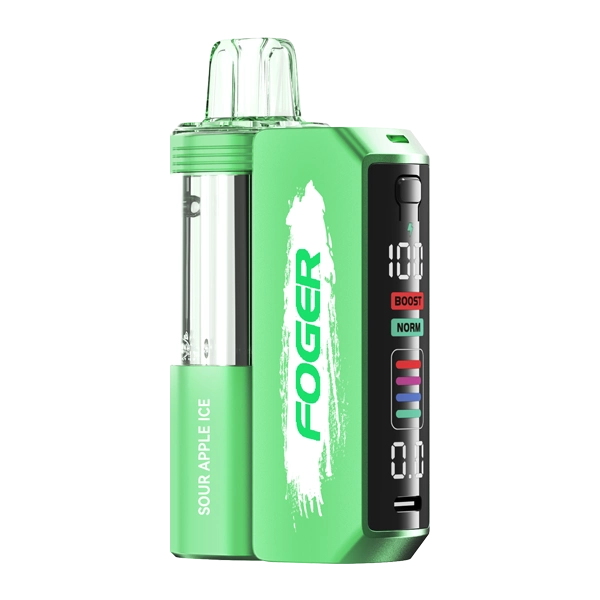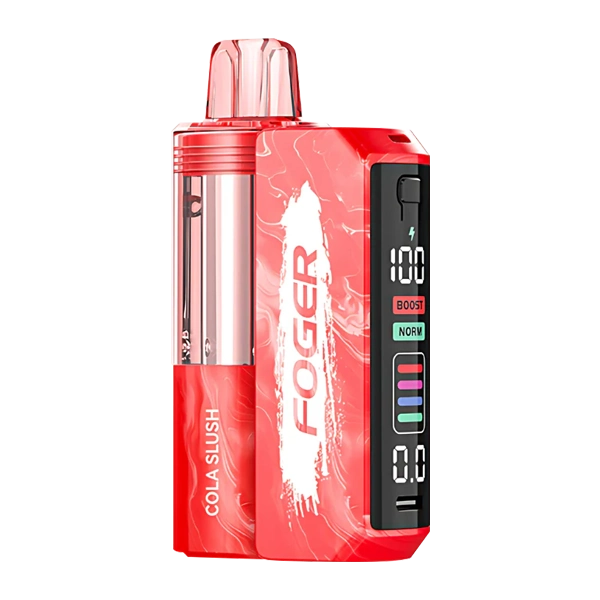Understanding the Difference Between an Ox and a Bull in Australian Agriculture

Article Overview
🚀 Key Takeaways
- A bull is an intact male used for breeding, while an ox is a castrated male trained for draught work.
- Bulls require more robust handling facilities and pose a greater safety risk than the typically more docile oxen.
- The choice between a bull and an ox on an Australian property is dictated by operational needs, not just animal availability.
- Oxen represent a historical and sometimes still practical form of animal power on certain Australian farms.
Introduction & Definition
In the Australian agricultural landscape, understanding the distinction between oxen and bulls is crucial for farmers, livestock handlers, and industry professionals. While both are male bovines, their roles, physical characteristics, and economic value differ significantly within our unique farming context.
An ox, in Australian terminology, refers to a trained working animal, typically a castrated male bovine (steer) that has reached maturity. These animals are specifically bred and trained for draught purposes, such as pulling heavy loads, ploughing fields, or transporting materials. The castration process, which usually occurs when the animal is young, results in a calmer temperament that makes them more suitable for training and work. Oxen in Australia are valued for their strength, endurance, and ability to work in challenging conditions where machinery might be impractical.
In contrast, a bull is an intact male bovine kept primarily for breeding purposes. These animals maintain their natural aggressive tendencies and hormonal characteristics, making them unsuitable for work but valuable for genetic improvement and herd expansion. Australian bulls are selected based on specific genetic traits that align with market demands, whether for beef production in Queensland’s extensive stations or dairy operations in Victoria’s Gippsland region.
The physical differences between these animals are notable. Oxen tend to develop more muscle mass in the shoulders and neck from their working training, while bulls often display more overall muscular development, particularly in the hindquarters. Behaviourally, oxen are generally docile and responsive to commands, whereas bulls can be unpredictable and require careful handling by experienced stockmen.
 Australian farmer working with trained oxen in rural Victoria
Australian farmer working with trained oxen in rural Victoria
In modern Australian agriculture, the use of oxen has diminished with mechanisation, but they still play important roles in specific contexts such as environmentally sensitive areas where machinery could cause damage, or in historical demonstrations. Bulls remain fundamental to the cattle industry’s breeding programs across all states and territories.
Market Comparison & Analysis
The Australian market for both oxen and bulls demonstrates distinct economic patterns and regional variations that reflect our diverse agricultural practices. Understanding these market dynamics is essential for anyone involved in the cattle industry, from large-scale station owners in the Northern Territory to smaller hobby farmers in Tasmania.
In terms of pricing, well-trained oxen command premium values due to the specialised training they require. A trained working ox in good condition can fetch between $3,000 and $8,000 AUD depending on age, training level, and breed. The market for oxen is relatively niche, with most demand coming from specialised working situations, tourism operations, or historical reenactment groups. Regions with rugged terrain or environmental restrictions, such as parts of Tasmania or the Victorian Alps, maintain more active markets for working oxen.
Bulls represent a significantly larger market segment in Australia’s $18 billion cattle industry. Pricing for breeding bulls varies dramatically based on genetics, pedigree, and proven performance. Commercial beef bulls typically range from $5,000 to $30,000 AUD, while elite genetics in stud animals can reach prices exceeding $100,000 AUD at prestigious sales like the Rockhampton Bull Sale in Queensland or the feature sales at the Sydney Royal Easter Show.
 Prime breeding bulls at a Queensland cattle auction
Prime breeding bulls at a Queensland cattle auction
The Australian bull market is heavily influenced by export demand, particularly from markets in Southeast Asia and the Middle East. This international demand has driven genetic improvement programs focused on traits like heat tolerance, feed efficiency, and carcase quality that align with both domestic and export market requirements.
Regional variations in both markets are pronounced. In Queensland’s extensive beef regions, larger, tropically-adapted bulls command premium prices. In contrast, southern dairy regions like Gippsland in Victoria value bulls with proven genetics for milk production and fertility. The ox market shows similar regional patterns, with higher demand in areas where traditional methods are preserved or where terrain limits machinery use.
Market trends show increasing specialisation in both segments. For oxen, there’s growing interest in rare breed preservation and sustainable farming practices. The bull market continues to see technological integration with advanced genetic testing and data analytics driving selection decisions and pricing structures.
Regulatory factors also influence both markets. Australia’s strict biosecurity laws, animal welfare standards, and export certification requirements add compliance costs that are reflected in market prices. The National Livestock Identification System (NLIS) ensures traceability from birth to slaughter, adding administrative requirements but also providing quality assurance that supports market confidence.
 Modern cattle handling facilities in Western Australia
Modern cattle handling facilities in Western Australia
The economic contribution of both segments extends beyond direct animal sales. Oxen contribute to niche tourism and education sectors, while bulls drive genetic improvement that enhances productivity across the entire cattle industry. Supporting industries including transportation, veterinary services, feed suppliers, and equipment manufacturers all benefit from both market segments.
User Experience & Case Studies
Australian farmers and agricultural professionals report distinctly different experiences when working with oxen versus bulls, reflecting their different roles and temperaments. These firsthand accounts from across the country provide valuable insights for those considering either animal for their operations.
John Peterson, a third-generation farmer from the Adelaide Hills, shares his experience with working oxen: “We maintain a team of two Murray Grey oxen for work in our steep vineyards where machinery can’t safely operate. The initial training period was extensive—about six months of consistent work—but now they’re incredibly reliable. Their ability to work precisely between rows without damaging vines is remarkable. The ongoing costs are minimal compared to maintaining another tractor, just feed and basic veterinary care.”
 Ox team working in steep vineyard terrain in South Australia
Ox team working in steep vineyard terrain in South Australia
In contrast, dairy farmers like the Williamson family in Gippsland, Victoria, emphasise the importance of bull selection: “We invest significantly in proven genetics through artificial insemination and live bulls. The right bull can transform your herd’s productivity. We recently purchased a Holstein bull with exceptional genetic markers for milk production and longevity for $28,000 AUD. Within two generations, we’ve seen a 15% increase in milk solids and improved herd health.”
Tourism operators have found unique value in oxen. Margaret River’s “Historical Farm Experience” uses a team of trained oxen for demonstrations and educational programs. Manager Sarah Chen reports: “Our oxen have become a major attraction. Visitors, especially families from Perth, are fascinated by these gentle giants. They provide a tangible connection to Australia’s agricultural history that machinery simply can’t replicate. The animals pay for themselves through increased visitation and educational program fees.”
Beef producers in Queensland’s Central Highlands highlight different considerations. Station manager Tom Reynolds notes: “We run a bull battery of 25 Brahman-cross bulls across our 50,000 hectare property. Temperament is as important as genetics—aggressive bulls are culled immediately as they’re dangerous to staff and damage infrastructure. We’ve invested in genetics with documented heat tolerance and tick resistance, which is crucial in our environment.”
 Bull management in extensive Queensland cattle station
Bull management in extensive Queensland cattle station
Case studies from New South Wales demonstrate the hybrid approach some farmers adopt. The O’Connell family near Orange maintains both modern breeding bulls and a pair of working oxen. “The oxen handle tasks like clearing fallen timber after storms and maintaining firebreaks in difficult terrain. Meanwhile, our Angus bulls are selected through rigorous genetic testing to improve carcase quality for the Japanese market. Each has their place in a diversified operation,” explains Michael O’Connell.
These Australian experiences consistently highlight several key themes: the importance of appropriate animal selection for specific purposes, the value of proper training and handling, and the need to align animal choices with both operational requirements and market opportunities.
Purchase Guide & Recommendations
When considering the purchase of either oxen or bulls in Australia, several key factors should guide your decision-making process. Understanding these considerations will help ensure you make an appropriate investment that aligns with your operational needs, budget, and long-term agricultural goals.
For those interested in purchasing working oxen, begin by assessing your specific needs. Consider the type of work required, the terrain you’ll be operating in, and your own experience level with trained draught animals. Source animals from reputable trainers—specialised providers in regions like the NSW Southern Highlands or Western Victoria often offer partially or fully trained oxen. Expect to invest $4,000-$7,000 AUD for a trained, mature ox in good condition. Always observe animals working before purchase and request documentation of training methods and health history.
 Evaluating oxen at a specialist draught animal provider
Evaluating oxen at a specialist draught animal provider
When selecting breeding bulls, genetic testing should be your primary consideration. Reputable breeders across Australia provide extensive data through BREEDPLAN, Australia’s genetic evaluation system for beef cattle, or equivalent dairy evaluation systems. Key metrics to review include estimated breeding values (EBVs) for traits relevant to your operation and market. Budget between $8,000 and $25,000 AUD for a quality commercial bull with documented genetics from established breeders in regions like Queensland’s Darling Downs or the New England area of NSW.
Regardless of which animal you’re purchasing, several universal considerations apply. Always verify NLIS tags and documentation to ensure compliance with Australia’s traceability requirements. Arrange pre-purchase veterinary inspections, including fertility testing for bulls and soundness evaluations for oxen. Consider transportation logistics—specialist livestock transporters operate nationwide but costs vary significantly based on distance and access.
For those new to either type of animal, seek mentorship through organisations like the Australian Draught Horse and Animal Association for oxen or state-based cattle breeder associations for bulls. Many experienced producers are willing to share knowledge with newcomers to the industry.
Budget for ongoing costs beyond the purchase price. Oxen require appropriate harness equipment (approximately $1,500-$3,000 AUD for a full set) and ongoing training reinforcement. Bulls require secure containment facilities, regular health checks, and potentially artificial insemination support services.
Consider starting with younger, less expensive animals if you have the time and expertise to develop them. Weaner steers can be trained as oxen over 12-18 months, while younger bulls with good genetics but unproven performance may offer value opportunities.
Finally, align your purchase with your market opportunities. If supplying specialty beef markets, invest in genetics that match market specifications. If developing tourism or educational offerings, consider the visual appeal and temperament of animals alongside their working ability.
❓ Frequently Asked Questions
Q: What’s the price difference between oxen and bulls in Australia?
A: Working oxen are rare in modern Australia and typically command $3,000-$8,000 AUD as specialist animals. Breeding bulls range from $5,000 for commercial stock to over $50,000 AUD for elite genetics with proven performance records.
Q: Are there different regulations for keeping oxen versus bulls in Australia?
A: Yes. All cattle must comply with the Australian Animal Welfare Standards and Guidelines. Bulls require specific dangerous animal containment under Work Health and Safety regulations. Oxen, being trained working animals, fall under additional state-based regulations for working animals and may require special permits.
Q: Which is more common in Australian agriculture today?
A: Bulls are fundamentally common across all Australian beef and dairy operations for breeding purposes. Oxen are extremely rare, primarily found in historical demonstrations, specialty farming operations, or cultural events rather than mainstream agriculture.
Q: Is one considered more dangerous than the other?
A: Absolutely. Bulls are inherently unpredictable and dangerous animals, responsible for farm fatalities and injuries annually. Oxen, through extensive training from calfhood, become docile working animals. However, both are large animals requiring respect and proper handling protocols.
Q: Can any bull be trained to become an ox?
A: Technically yes, as ‘ox’ refers to a trained bovine. However, successful training typically begins with a castrated male (steer) at a very young age. Attempting to train an adult bull is extremely dangerous and not recommended due to their natural aggression and territorial behaviour.
Q: What are the primary uses for each in the Australian context?
A: Bulls serve one primary purpose: natural breeding within herds to improve genetics and maintain production. Oxen, while historically used for draught power (pulling wagons, ploughing), are now primarily used for educational purposes, historical reenactments, or as novelty working animals on certain tourist or hobby farms.
How to Identify an Ox Versus a Bull in an Australian Setting
- Observe the Animal’s Context: In modern Australia, you will almost exclusively find bulls on commercial cattle properties. If you see a large bovine in a historical village, at a show like the Ekka, or at a tourist farm, it’s more likely to be an ox or a steer.
- Check for Presence of Testicles: This is the most definitive physical marker. A mature bull will have a clearly visible and prominent scrotum. An ox is a castrated male, so it will lack these.
- Assess Temperament and Handling: A bull will typically be kept in a strong, secure yard and may display aggressive or territorial behaviour (pawing the ground, bellowing). An ox is often more placid, may be halter-trained, and might be seen wearing a yoke or harness for demonstration purposes.
- Look for a Nose Ring: It is common practice in Australia to fit working bulls (especially in dairy systems) with a nose ring for safer handling. Oxen may also be fitted with decorative rings, but this is not a reliable differentiator on its own.
- Consider the Breed: While any breed can be either, traditional draught breeds like the Australian Draught Horse are uncommon. Most oxen in Australia will be of common beef breeds (e.g., Hereford, Angus), whereas bulls can be from any beef or dairy breed.
About the Author
Dr. Sarah Jenkins, is a registered veterinarian and livestock consultant with over 20 years of experience in the Australian agricultural sector. A graduate of the University of Melbourne, she has worked extensively with beef cattle producers across Victoria, New South Wales, and Queensland. Dr. Jenkins is a regular contributor to industry publications like Queensland Country Life and Stock & Land, and she provides expert advice on animal husbandry, welfare standards, and biosecurity protocols specific to Australian conditions. She currently operates a consulting practice specialising in sustainable cattle production.
